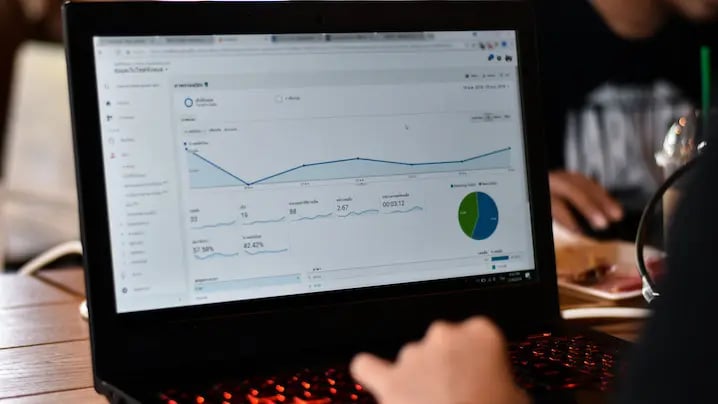In the dynamic world of eCommerce, where success hinges on meeting customer demands swiftly and efficiently, mastering inventory management is crucial. Inventory management, in the context of eCommerce, refers to the strategic control and oversight of a company's stock to ensure products are available when customers want them - having the right product, in the right amount, at the right time.
Essentially the ‘what, where and when’ of all the items you sell. As a direct-to-customer retail business, your inventory represents a substantial investment, making its careful management vital for customer satisfaction and the sustained growth of your business.
Ecommerce Inventory Management |
Inventory Management Challenges
For any product-based business, there are a plethora of challenges to navigate. The constant ebb and flow of customer demand, seasonal fluctuations, and the need to balance stock levels to prevent overstock or stockouts present significant hurdles.
Ecommerce retailers face these complications and experience their own unique set of obstacles. Selling your products across multiple online channels like owned-brand and wholesale websites, and various social media platforms can lead to issues with inventory accuracy, order fulfillment speed and accuracy, as well as unproductive inventory.
Excellent inventory planning and tracking are key tools for troubleshooting many of the top problems eCommerce retailers face.
Principles of Inventory Management
While it may sound complicated, managing inventory for an eCommerce business is absolutely possible! Using a few fundamental techniques will help nearly any eCommerce retailer experience success.
First off you need excellent demand or sales plans. An adage that you’ve likely heard before, is ‘Garbage in, garbage out.’ Since your inventory should be planned based on your anticipated sales, you must have top-notch demand plans in order to plan the corresponding inventory. If your demand plan is too basic, incomplete, or inaccurate, your inventory will be too. Solid demand and inventory plans rely on prior sales and inventory history, utilize objective data analysis and include supporting context to take a ‘best-guess’ at forecasting what will happen for the coming selling period.
Secondly you need clear and thorough methods for tracking your inventory from raw materials, to finished goods to fulfilled orders. As you build momentum for your retail business you need to ensure your customers never have to wait for their favorite items. Tracking your inventory from its raw material stage through to completed item and delivery to your customers is indispensable in first-rate inventory management. It empowers you to know how much you have available for customer fulfillment as well as make proactive choices about what inventory you need to order from your supplier and how to best utilize your purchased raw materials going forward.
Solutions for Inventory Management
There are various inventory planning and forecasting software tools available, and the Point of Sale (POS) platform you use for order processing and customer interactions probably offers many helpful reporting features already. A major drawback though is that these software solutions still require a person to understand how to interpret reports and interact with that system. While these systems can offer key advantage time spent learning the system can take away from other vital eCommerce business functions.
Technology will play a role in the work of any retailer, but we’ve found there are many excellent inventory management solutions that don't rely solely on software-based tools. Including human understanding and strategic thinking is not only highly advantageous but essential for successful inventory management.
We’ve found a few methods and tools that serve nearly any business. Employing proactive strategies, and careful data analysis are prime ways to manage your inventory effectively. Top strategies include: using just-in-time inventory planning methods, setting up inventory alerts or optimal reorder points, scrutinizing your assortment plans, and conducting regular sales and inventory recaps or hindsights to identify discrepancies between your initial plans and your actual results.
Build your assortment plan with core items in mind. Core items are evergreen items that will continually remain in your assortment in some way. Featuring a few long lasting items empowers you to buy inventory and components in bulk, saving you up-front costs and maximizing your profit margin.
Create a regular recapping process so that you routinely review your sales performance as compared to your inventory levels. A big key here is having an inventory alert, seasonal hindsight review and Open-to-Buy financial tool be part of that recapping process. Inventory alerts and Open-to-Buy tools ensure you stay instock for key items and don’t overspend on your inventory budget.
Seasonal hindsights review sales, inventory and customer data objectively while layering in subjective reflections or information like weather patterns, and social media driven trends. Incorporating both data and insight allows you tounderstand the ‘why’ behind each product, event, and promotional performance in order to strategically plan future inventory.
By adopting these strategies, businesses can maintain optimal stock levels while minimizing excess inventory costs.
Inventory Management Best Practices
Inventory is usually your biggest expense as a product-based retailer and running out of cash, and price and cost issues make up a large percentage of the top five reasons eCommerce businesses fail, This means, investing wisely in your inventory is especially important. There are a few best practices that simplify the process of figuring out how to spend your inventory dollars.
-
Create Top-Notch demand plans - Sales go hand in hand with inventory. Planning your sales down to the sku level, based on history, is key for knowing how much inventory you’ll need to purchase from your supplier in order to support your sales but not purchase too much inventory at once.
-
Regularly Recap business performance - Frequently reviewing your sales and inventory levels is an essential way to determine next steps in your business. It empowers you to see which items are the strongest sellers and need to be funded and which are poor performers that need less investment or possibly liquidation. Taking the time to recap sales means you’ll catch issues quickly and be able to proactively drive results in your business.
-
Identify Unproductive Inventory - A secondary step to recapping your business performance is establishing a method for determining which items are underperforming. Identifying slow selling items gives you the ability to stop ordering them from your supplier, potentially adjust pricing associated with items and avoid negative impact to your bottom line by accruing storage costs.
-
Standardize Your Naming Conventions - As ecommerce retailers regularly sell across multiple channels recapping business performance, identifying unproductive inventory and planning sales requires that you identify your SKUs or items in a standard way. Utilize a method that integrates with our POS or point of sale software so that you easily know which items are selling, how much inventory you have and have complete sales history to use for future demand planning purposes.
Not only do these practices contribute to your bottomline as a business they also lead improved customer satisfaction and loyalty.
When to outsource inventory management?
One of the biggest challenges of building a new retail business is trying to manage it all. Large retailers often have the capacity to hire a team of inventory planners to manage their demand and inventory plans but startup retailers usually don’t have that option. Thoughtfully deciding where to invest your time and money is a major key to success.
If you're looking to outsource here, be sure to find a team that can make inventory planning best practices understandable and accessible for everyone. Make sure you ask all the right questions. You want someone with great experience that integrates with what you're using. The integration bit is important because some of these companies push new systems/softwares on you that can slow your processes down significantly.
Our friends at Boon say the most common issue people come to them with is data related. "They've got complex systems that are just not set up for success and it drains a significant amount of resources from their brand."
If your team is struggling to manage tech providers, legal support, marketing efforts and other consultancies, then it might be time to look into outsourcing.
The Future of Inventory Management
Looking ahead, the future of eCommerce inventory management holds exciting possibilities. Smart warehouses, predictive analytics, and automated supply chain processes will become integral components of the eCommerce ecosystem.
While these advancements can assist businesses with planning accuracy, order fulfillment and more, in our experience the best results are driven by adding a human touch. Management of the system and interpretation of the data by a person earns you a degree of critical thinking that AI and technology just can’t replace.
 You've made it this far and you've learned so much. Congratulations!
You've made it this far and you've learned so much. Congratulations!
If you're looking to learn more about marketing or Ecommerce in general, feel free to reach out to us at: solutions@undigital.com
Inventory Management FAQ
What is Inventory Management?
The process of financially planning, ordering, shipping and storing a company’s inventory.
Why is Inventory Management Important for Businesses?
Inventory is the tool you have for producing revenue in your business. It’s one of the largest (or maybe largest) investment a product-based retailer makes and the thing they use to make money. Inventory management is essential for cashflow, customer satisfaction and profitability.
What are the Different Types of Inventory?
There are so many! For many ecommerce retailers the most important ones are:- Raw materials - the foundational materials, notions and components used to make the Finished Goods
- Finished Goods - items that are ready to sell to a customer
- Packing and Packaging Materials - Materials that help protect and transport your finished goods safely from your supplier to your customer.
- Excess Inventory - unsold or unused goods or raw materials that that weren’t required for finished goods production or shipping but that companies have to store, repurpose or dispose of.
What is Just-In-Time (JIT) Inventory Management?
An inventory management method where goods arrive from vendors or suppliers just as they are needed to fill customer orders. This method helps reduce storage and warehousing costs for retailers.
What Are the Challenges of Inventory Management?
- Anticipating Customer Demand and forecast accuracy
- Tracking production, shipping and storage of finished goods
- Utilizing skillful marketing strategies
- Assortment planning and product lifecycle management
- Leveraging hindsight and sales data to develop future strategies and products
What is Inventory Turnover and Why is It Important?
Inventory turnover is the rate at which you sold through your inventory relative to a specific amount of time. Inventory turnover is an indicator of demand for your items and can help you make key decisions about your inventory. Based on your inventory turnover you may need to change your pricing strategy, increase your ordering frequency or take action to reduce stock levels in specific items.
Can Inventory Management Impact Customer Satisfaction?
Absolutely! Running out of inventory is not only a way to leave sales on the table, but also to send your hard-earned customers to another retailer. If your customer can’t buy the product they want or need from you when they want it, you might get lucky and have them sign up for a waiting list but more than likely they’re headed to another retailer than can ship their item instantly.
You May Also Like
These Related Stories

Top 10 Warehouse Management Systems of 2022

The Application of Personalization in Ecommerce


